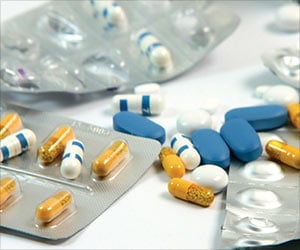New research has pointed out that chiral metal surfaces can help in manufacturing pharmaceuticals.

A chiral object, such as your hand, is one that cannot be superposed on its mirror image. Chirality is fundamental in biochemistry. The building blocks of life - amino acids and sugars - are chiral molecules: their molecular structures can exist in either "left-handed" or "right-handed" forms (or "enantiomers").
A living organism may respond differently to the two enantiomers of a chiral substance. This is crucially important in the case of pharmaceutical drugs, where the therapeutic effect is often tied strongly to just one enantiomer of the drug molecule. Controlling chirality is therefore vital in pharmaceutical synthesis.
Research into controlling chiral synthesis focuses mainly on using homogeneous catalysts, where the catalyst is in the same phase as the reactants and products, such as a liquid added to a liquid-phase reaction. However, this poses significant practical challenges in recovering the valuable catalyst material from the mixture. To avoid this problem, an attractive alternative would be heterogeneous catalysis over a solid surface - the type of catalysis used in catalytic converters in car exhaust systems, as well as in industrial Haber-Bosch synthesis of ammonia and Fischer-Tropsch synthesis of synthetic fuel, for example. The question then is how to achieve enantiomer-specific effects at a surface.
To help answer this question, scientists at the University of Cambridge have been probing the spontaneous self-organization of a simple chiral amino acid, alanine, into regular molecular arrays on copper single-crystal surfaces. Thanks to a powerful scanning tunnelling microscope, capable of resolving individual atoms and molecules, their work is revealing the various manifestations of chirality that occur, giving important clues to how they arise, and how they might be controlled and exploited.
Dr Stephen Driver, of the Department of Chemistry at the University of Cambridge, who led the experimental work, said: "We set out to investigate two distinct scenarios. In one scenario, the surface is non-chiral, so any chirality that we see can only arise from the chirality of the alanine molecule. In the other scenario, we move to a surface that is intrinsically chiral. Now the question becomes: do the two enantiomers of alanine behave differently on this chiral surface?"
Advertisement
Driver explained: "The implication is that the chiral centre is having a direct influence on the packing of two alanine neighbours at the boundary, and that the chirality of this pair propagates to the next pair and the next and so on, so that the chiral boundary is built up over a long range."
Advertisement
Driver added: "It looks like alanine can shape a comfortable, chiral bonding site for itself. The copper surface has the flexibility to adapt itself to the shape of the alanine molecule, and this shape is different for the two different molecular enantiomers."
The results imply that certain surface orientations will form stable, ordered structures with one molecular enantiomer but not the other: exactly the right conditions to promote chiral chemical effects.
Professor Sir David King, former Chief Scientific Advisor to the UK Government and current Director of the Smith School of Enterprise and the Environment at Oxford, brought together the team carrying out this research. "These results are very exciting," said King. "Tailoring the right surface to the right molecule should lead to strong enantiospecific effects. We see a real basis here for a breakthrough technology in the pharmaceuticals sector. It's something that pharma companies should be taking a close interest in."
The Cambridge team's findings are published in Topics in Catalysis.
Source-Eurekalert















